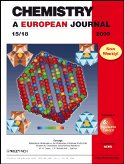167. Isotope-Exchange Dynamics in Isostructural
Decametalates with Profound Differences in Reactivity

Abstract Rates of oxygen-isotope exchange at all structural sites in two isostructural polyoxometalates, [HxNb10O28](6−x)− and [HxTi2 Nb8O28](8−x)−, show that small changes in structure have surprising and profound effects: a single-site substitution of Ti(IV) for Nb(V) inverts the pH dependencies for rates throughout the structures. Within a given structure, all oxygens exhibit similar pH dependencies although they react over a range greater than 104, indicating that pathways involve concerted motions of the entire lattices. Profound sensitivity to changes in structure and composition suggests reaction pathways in polyoxometalate ions will be highly variable even within structural classes. The results also require new thinking about how ab initio simulations are used to understand reaction pathways involving extended structures, like the mineral−water interface. Our data indicate that reactions proceed via metastable intermediates and that the simulations must be structurally faithful or will miss the essential chemistry.
Villa, Eric M.; Ohlin, C. André; Rustad, James R., Casey, William H. "Isotope-Exchange Dynamics in Isostructural Decametalates with Profound Differences in Reactivity", J. Am. Chem. Soc., 2009 , 131(45), 16488-16492. Issue cover.







